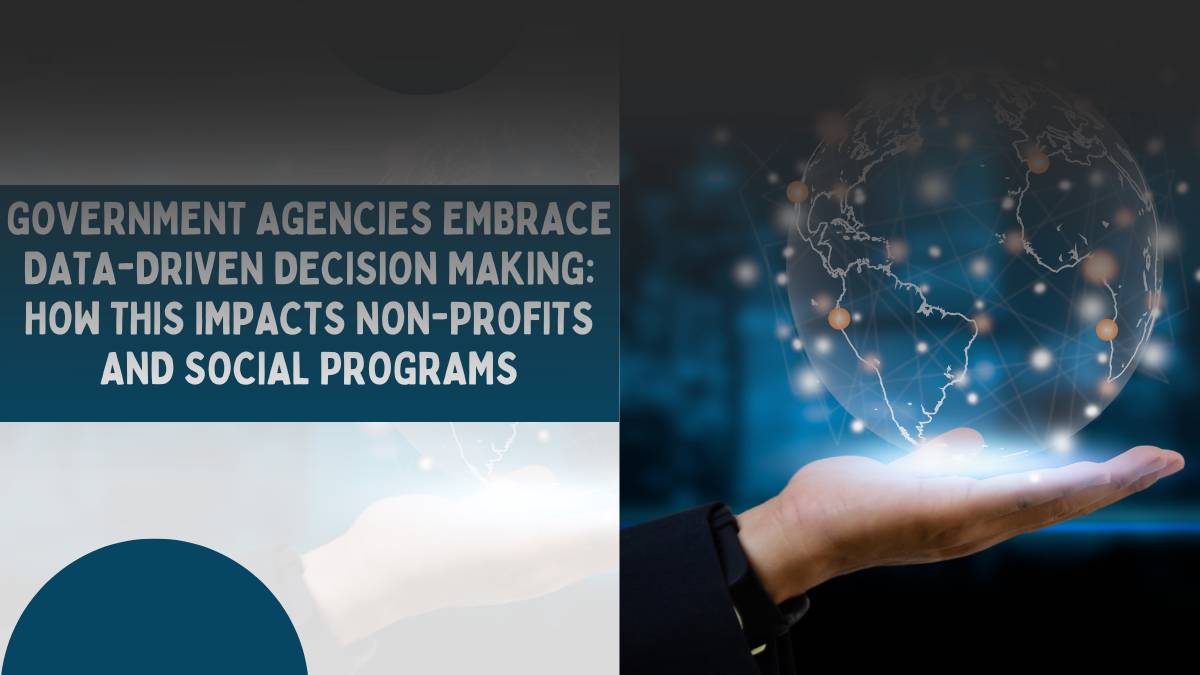Government Agencies Embrace Data-Driven Decision Making: How This Impacts Non-Profits and Social Programs
The landscape of government decision-making is shifting significantly. Traditionally, policy and funding decisions were often based on experience, intuition, or political pressure. Today, many government agencies are increasingly turning to data-driven decision-making. This involves relying on factual information and comprehensive analysis to guide policy and funding allocations, which has profound implications for non-profits and social programs.
The Shift to Data-Driven Decision Making
In recent years, the availability of big data and advancements in data analytics have enabled government agencies to make more informed and objective decisions. This transition aims to enhance the efficiency, effectiveness, and transparency of public policies and funding initiatives. By leveraging data, government entities can identify which programs deliver the best results, ensuring that taxpayer money is spent wisely and societal challenges are addressed more effectively.
Benefits for Non-Profits
The shift to data-driven decision-making presents several potential benefits for non-profits:
- Targeted Funding: Data allows government agencies to identify and support the most effective programs. Non-profits with strong, demonstrable results can potentially receive increased funding. This targeted approach ensures that resources are allocated to initiatives that have proven impact, thus maximizing the social return on investment.
- Focus on Outcomes: Data-driven decision-making emphasizes measuring program outcomes. This approach aligns with the mission of many non-profits, which focus on creating measurable social impact. By demonstrating tangible results through data, non-profits can better communicate their effectiveness and secure continued support.
- Collaboration Opportunities: Government agencies may seek partnerships with non-profits for data collection, analysis, and program implementation. Such collaborations can enhance the capabilities of non-profits and lead to more comprehensive and accurate data, improving the overall effectiveness of social programs.
Challenges for Non-Profits
However, the shift to data-driven decision-making also poses significant challenges for non-profits:
- Data Burden: Collecting and analyzing data can be time-consuming and costly. Non-profits may face increased pressure to provide detailed reports and meet specific metrics as part of grant requirements. This data burden can strain resources, particularly for smaller organizations with limited capacity.
- Focus on Measurable Outcomes: Not all social issues are easily quantifiable. Programs addressing complex issues such as poverty or homelessness may struggle to demonstrate clear, measurable outcomes. This focus on quantifiable results may inadvertently disadvantage initiatives that tackle multifaceted and deeply rooted social problems.
- Competition for Funding: Data-driven funding allocation can intensify competition among non-profits. Organizations must demonstrate the most effective outcomes with limited resources, which may lead to a zero-sum game where only a few receive the bulk of funding, potentially leaving many valuable programs underfunded.
Adapting to the Data-Driven Environment
To thrive in this evolving landscape, non-profits must adapt strategically. Here are some ways non-profits can position themselves to succeed:
- Invest in Data Collection: Developing robust data collection systems is essential. Non-profits should track program data that aligns with potential government funding priorities. Investing in technology and training can help organizations gather and analyze data more efficiently.
- Focus on Measurable Outcomes: When designing programs, non-profits should prioritize setting clear, measurable goals and objectives that can be tracked through data collection. This focus on outcomes not only aligns with government priorities but also enhances the organization’s ability to demonstrate impact and secure funding.
- Partner with Other Non-Profits: Collaboration is key in a competitive funding environment. Non-profits working in similar areas can share data and resources, creating a stronger collective impact. These partnerships can lead to more comprehensive data and a greater ability to address complex social issues.
- Advocate for Flexibility: Non-profits should engage with policymakers to advocate for a balanced approach to data-driven decision-making. It’s crucial to highlight the complexities of social issues and the need for flexible metrics that capture the full scope of a program’s impact. Advocacy efforts can help shape policies that recognize the value of qualitative outcomes alongside quantitative data.
Case Studies: Successful Adaptation
Example 1: Health Non-Profit Leveraging Data
A health-focused non-profit successfully adapted to the data-driven landscape by implementing a robust data management system. By tracking patient outcomes, treatment efficacy, and community health indicators, the organization could provide compelling evidence of its impact. This data-driven approach not only secured additional funding from government grants but also attracted private donors interested in supporting high-impact initiatives.
Example 2: Collaborative Approach to Homelessness
Several non-profits addressing homelessness formed a coalition to share data and resources. By pooling information on service usage, client outcomes, and program effectiveness, the coalition presented a unified front to government agencies. This collaborative effort not only improved the quality of data but also led to a more coordinated and effective response to homelessness, ultimately resulting in increased funding and policy support.
Example 3: Advocacy for Comprehensive Metrics
A non-profit focused on poverty alleviation engaged in advocacy efforts to highlight the limitations of purely quantitative metrics. By presenting case studies and qualitative data that demonstrated the complex nature of poverty, the organization successfully influenced policymakers to adopt more comprehensive evaluation criteria. This advocacy ensured that programs addressing systemic issues received fair consideration in funding decisions.


